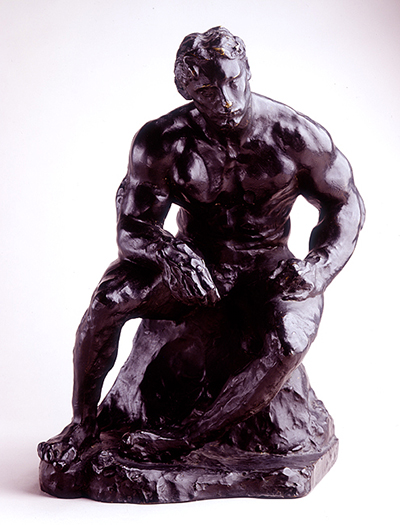The Athlete, also called American Athlete, is a bronze sculpture in a black patina that Auguste Rodin did in 1901-1904. Samuel Stockton White III, a University of Princeton gymnast, was the model for the piece. White met Rodin in 1901 through a mutual friend when he was visiting Paris.
The French artist asked the gymnast if he could pose for a sculpture just before the 1904 Olympic Games. White agreed, but the sculpture had to be done in several sessions because he did not frequent France often. When talking about the experience, White said that Rodin made him walk in and out of the studio to get different angles. The artist then asked the model to sit in a simple and natural position.
While sat on a chair with his arms on his legs when posing for The Athlete. In the sculpture, the gymnast is nude with his muscles taking prominence. Rodin was known for a bit of exaggeration in his artwork when he was trying to send a message. The Athlete highlights the bulging muscles, toned abdomen and thighs. He sculpted White leaning slightly forward with his left hand on the thigh and the other one folded at the elbow to rest easily on the right thigh. The look on the gymnast's face is one of calm and self-assurance. It is one feature that separates The Athlete from many of Rodin's subjects who always seem tense.
Another Rodin sculpture that closely resembles the work he did on The Athlete is The Thinker. The two models are seated in almost the same posture except that the thinker has a contemplative look on his face. True to Rodin fashion, it is easy to tell what the subjects are feeling because it is carved into their faces. Rather than a chair, the gymnast is sitting comfortably on a rock, which is another classic move by Rodin. He makes the subjects blend into their settings. Rodin did several versions of The Athlete. In the first, which the artist gave to White, he sculpted the gymnast with his head facing forward. A second version of the sculpture shows the athlete's head tilted to the right. The exaggeration of the muscular features in the first one is more prominent than the second. Several copies of the Athlete are also available, although the piece remains one of the least known works by Rodin.




